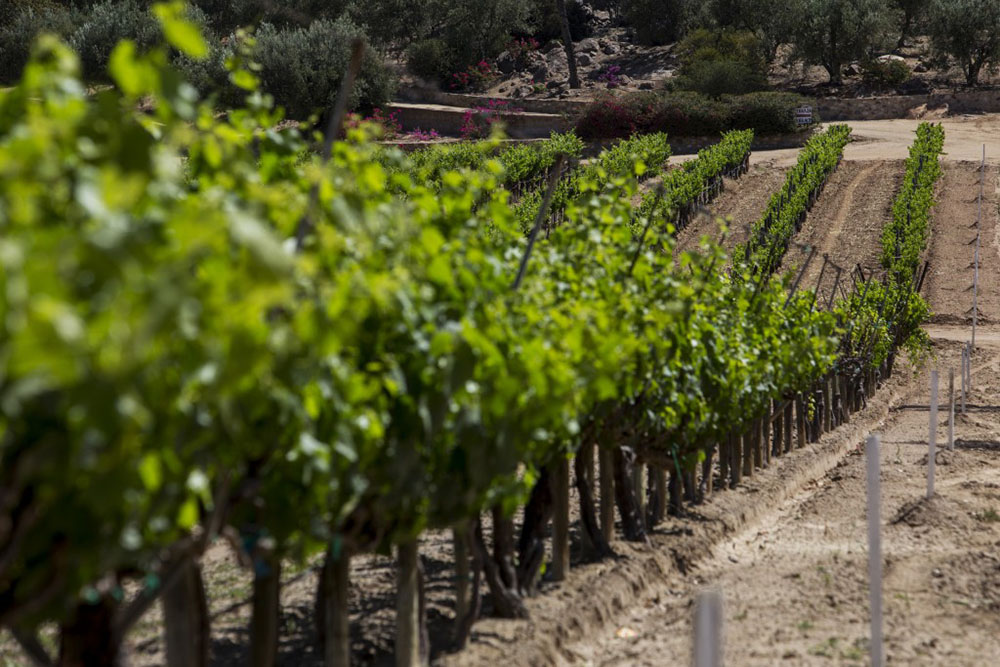- Slug: BC-CNS-Downpour Downers,810.
- Photo available (thumbnail, caption below).
By Karina Romero
Cronkite News
LOS ANGELES – For Californians and Arizonans who can’t decide if they like the rain after a stream of storms that have drenched both states, consider how it’s affecting farmers.
The intensity and frequency of rain marching through one of the most productive agricultural regions of the nation have blessed some farmers after years of drought while devastating others.
For instance, in Monterey, the California county that’s home to the rich vegetable growing region dubbed “the salad bowl of the world,” some $336 million in expected flood-related damage was estimated in late February – and that was before more storms lashed the county in March.
But some vintners basked in the showers, especially since some had had to put some of their grape-growing land out of production during the drought.
“Rain, rain, and more rain. We love it,” said Josh Beckett, second-generation owner of Peachy Canyon Winery, based in Paso Robles in the state’s central wine-producing area between Los Angeles and San Francisco.
The plentiful rainfall was being hailed as mostly good news in Arizona.
“I’ve heard about the flooding and other issues California has been experiencing with their fresh vegetable crops. To date, we have not received reports of serious flooding or other major weather impacts to crops this season for Arizona,” said Heather Flowers, spokeswoman for the Arizona Department of Agriculture.
In Yuma, the rain can put a hold on production: “When it rains, that delays planting or harvesting, and that does indeed cause them to shake their fists at the storm clouds,” said Paul Brierley, executive director of the University of Arizona’s Yuma Center of Excellence for Desert Agriculture.
Due to little rain, Yuma growers rely heavily on the Colorado River for water, he said. It allows farmers to have better control over irrigation than having to depend on Mother Nature for much-needed rainstorms. Plus, they can produce year-round, creating a reliable contract for fresh produce that is timed six to 12 months in advance.
Rain and snow are needed in the Colorado River Basin, specifically the upper states of Wyoming and Colorado, to replenish the river, which flows into Lake Powell and Lake Mead. Yuma growers are then able to access this water for their production.
But when it comes to feeding the nation, it’s California that matters most. The state was the biggest food producer in the U.S. by a long shot as of 2021 based on cash receipts, followed by Iowa, Nebraska, Texas and Minnesota, the U.S. Department of Agriculture reports. Arizona was 31st.
After years of drought, rainfall amounts so far this season in California have come as a shock to a state poised for another painfully dry year and imposing harsher water conservation measures as a result. In Fresno, in the heart of the San Joaquin Valley farming region, more than 13 inches of rain has fallen this year compared to a little more than an inch for the same period a year ago, the University of California reports.
California’s unusually wet weather is due to what meteorologists refer to as “atmospheric rivers,” which stream warm moisture in from the Pacific. The condition has a nickname: “the pineapple express.” Yet another one of the storms was marching through the state this week.
In Monterey County, the hardest-hit crops included romaine lettuce, strawberries, celery, carrots, broccoli and garlic. Some 15,705 acres were affected, according to a survey released by county Agricultural Commissioner Juan Hidalgo.
Flooding in the farm town of Pajaro after a levee gave way not only left families homeless, but inundated fields in a prime strawberry growing region, leading to the prospect of higher prices.
Rick Tomlison, president of the California Strawberry Commission, listed the toll as “hundreds of millions in losses” based on preliminary estimates and “thousands of people displaced in the town of Pajaro.”
But as is so often the case when it comes to farming, some growers suffer by a dramatic turn in the weather while others prosper. Some winemakers appear to have ended up on the winning end.
“Severe drought conditions for the last several years have created a real challenge to maintaining plant health,” said Nancy Kirchhoff of Kirchhoff Family Wines in Clarksburg. “Winter storms have provided a much-needed benefit to dry-farming by increasing the groundwater levels we rely on to nourish the vines.”
Peachy Canyon’s Beckett said his family winery had just been trying to hang on during the drought, having had to put 30 acres of the vineyard out of production. The rain not only recharges aquifers but flushes away unwanted salinity build-up.
That is not without saying the rain isn’t getting in the way of normal vineyard operations. Peachy Canyon is struggling to do tractor work and get the pruning done. But those necessary tasks are mere inconveniences compared to the benefits of the repeated deluges.
“We will take all the rain we can get,” Beckett said.
For more stories from Cronkite News, visit cronkitenews.azpbs.org.
^__=
Heavy rains have been a boon to California’s vineyards, helping them bounce back after years of drought. But the rains and snows from one of the state’s wettest winters on record has been a curse for farmers of other crops that have been devastated by flooding. (File photo by David McNew/Getty Images)
